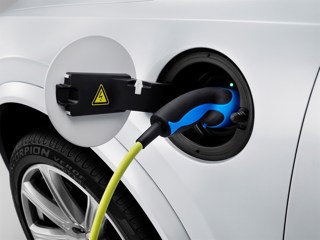Ten years ago, just six electric cars were available, accounting for less than one in 1,000 new car registrations. Today, there are now more than 140 models on the market, with electric vehicles (EVs) accounting for more than one in six new cars and one in 28 vans registered.
However, just one in 80 cars on the road runs on electricity, with the UK aiming for one in three by 2030 if net zero ambitions are to be met, says the Society of Motor Manufacturers and Traders (SMMT).
The challenges are examined in Plugging the Gap, an updated blueprint for delivering the zero emission transition from the SMMT.
Private motorists accounted for just a third of new plug-in registrations in 2021, with uptake far higher among businesses and fleets.
The SMMT says that this is down to fleets benefitting from “generous fiscal incentives”, such as low benefit-in-kind (BIK) tax.
Meanwhile, purchase incentives have been rolled back dramatically over the past year, with the UK’s EV adoption now falling behind some European markets which offer more attractive incentive packages.
Further growth in this market, however, depends as much on charge point provision as affordability, says the SMMT.
Research it has carried out reveals that the ratio of public standard chargers to electric vehicles has rapidly deteriorated, with just one charger for every 32 plug-ins across the UK compared with one for every 16 just 12 months ago, and significant regional variations.
The industry is calling on all parties integral to the drive to zero, including charge point operators and Government, to help ‘plug the gap’ between infrastructure roll-out and uptake.
Mike Hawes, SMMT chief executive, said: “The UK automotive industry has set out its intent – to meet the challenge of net zero – and has backed that ambition with cash, investing massively during Britain’s first electric decade.
“As we enter the second, the stakes are higher, with some of the world’s toughest regulation coming, regulation that will seek to determine the pace of change in a market constantly buffeted by headwinds.
“But mandates on manufacturers alone will not drive the market. Delivering net zero needs a competitive industry and a competitive market.
“We need a holistic strategy with binding targets on charge point provision, attractive fiscal and purchase incentives, and a reliable, accessible and affordable user experience.
“We need a universal right to charge electric vehicles, for all drivers, wherever they live, wherever they travel and whatever their needs.”
SMMT has advocated a nationally coordinated, locally delivered infrastructure plan, with binding targets for charge points that match those imposed on vehicle manufacturers.
Overseen by a regulator, such a plan would put consumers at the heart of the transition, accelerating charge point provision and addressing charging anxiety among drivers and businesses.
It would also help the one in three households that do not have off-street parking and would therefore be reliant on public charging, to make the switch, it says.
Furthermore, a vibrant, well-supported market would help attract greater industrial investment, creating jobs and supporting economic growth.
Gigafactory investment, it says, is essential if the UK is to achieve the 60GWh capacity it needs by 2030, a capability that would support the production of around one million electric vehicles a year.
This, in turn, would enable the industry to exploit the benefits of the UK’s ambitious trade agenda, maximising locally originating content to achieve tariff-free exports to key growth markets worldwide, and help Britain to realise a zero-emission future with greater resilience and self-sufficiency in battery production and the wider electrified supply chain.
While overall UK gigafactory capacity is currently just 2GWh, major battery production commitments that will come online in the coming years are estimated to take UK capability to around 41GWh by 2027.
The EU, meanwhile, is forecast to have a capacity of up to 1.5TWh by 2040, with more than 25 gigafactories either under construction or in development.
For the UK to become a location of choice for potential investors, therefore, Government must create the right conditions, with a streamlined process for obtaining the necessary permits and licences, easy access to skilled and productive labour, and competitively priced clean energy, concludes the SMMT.
> Interested in comparing electric vehicle data? Check out our EV tool.
> Interested in ensuring the efficient use of EVs. Check out our dedicated editorial sections: Insight & policy | EV news | Charging & infrastructure | Costs & incentives | Benefit-in-kind | EV case studies | EV road tests
























Login to comment
Comments
No comments have been made yet.